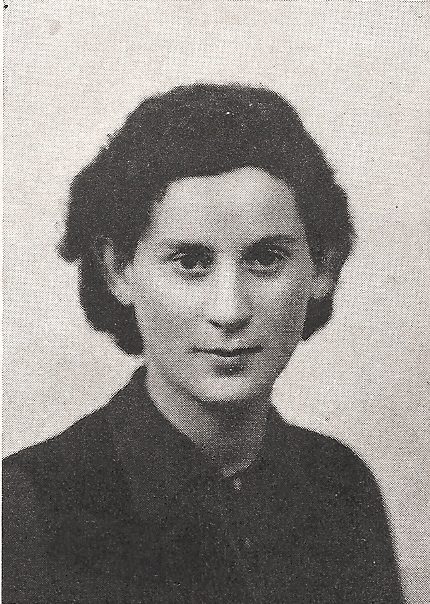Chajka was born into a poor and orthodox family in Będzin in 1917. Leibel Klinger, her father, followed the Hasidic tradition of intensive Torah study, and her mother Perla ran a grocery store. It was unusual for a daughter of this background to receive a modern education, but Chajka went to Będzin’s co-educational and bilingual Fürstenberg Gymnasium. Before the outbreak of World War 2, Chajka was already active in Będzin’s youth movement, particularly in the Zionist-socialist Hashomer Hatzair.

After the German occupation, she became a central leader in Hashomer Hatzair. As restrictions grew worse in 1942, she and her boyfriend Dawid Kozlowski organized the underground among Będzin’s young people. In the beginning, their work included social events and political education, often at meetings in the farm given to the youth by Będzin’s Jewish Council. As the youth leaders received news of the destruction of other ghettos in Poland, especially from Mordechai Anielewicz, the young leader of the Warsaw Ghetto uprising, the underground prepared for the worst. For Chajka, it was vital not to run away (she refused an earlier offer to escape) but to fight back in self-defense. Together with other activists, they obtained a few arms and built underground bunkers.
Chajka’s boyfriend Dawid, together with a small group of young people, left Będzin to join the partisans. Chajka wanted to join but the leadership had chosen her to survive by all means so as to give testimony to the Holocaust. Dawid’s group was betrayed: they got as far as a nearby forest where they found themselves surrounded by German soldiers and shot. “I’ve lost the man whom I loved so much,” Chajka wrote in 1943 in her diary. “He was my companion, friend, and lover.”

In August 1943, when the Nazis carried out the final deportation of Będzin’s Jews, Chajka and other resistance members went into hiding in their small bunker, including Miriam ‘Kasia’ Szancer. For days, several young people squeezed into a dark place with no air and with not even a bucket to relieve themselves. “It is so humiliating to one’s human dignity,” Chajka wrote, “it is worse than the most brutal torture.”
When their bunker was discovered, they were beaten, humiliated, and deported. Chajka was interrogated and brutally tortured by the Gestapo, but evaded deportation while forced to work for the Germans during the final mop up operations in the ghettos of Kamionka and Srodula. She eventually escaped and was hidden by Kobilec, a Polish family. There, she started to write her diaries. “Human language is too inadequate to properly express all that must be told,” Chajka wrote in despair, lamenting her “miserable, inhuman loneliness.”
In December of 1943, Chajka managed to escape to Slovakia with some other survivors from the underground. She eventually arrived in Israel carrying her diaries – the first written testimony about the ghetto’s uprising. In 1944, she married Yaakov Rosenberg, had three children, and worked in a kibbutz. The past never left her. In 1958, on the fifteenth anniversary of the Warsaw Ghetto uprising, she took her own life.
Decades later, one of her sons (Avihu Ronen, an Israeli historian) took it upon himself to research his mother’s life and publish her diaries.
For more information:
Chajka Klinger. 2017. I am Writing These Words to You: The Original Diaries of Będzin 1943. Edited by Avihu Ronen.